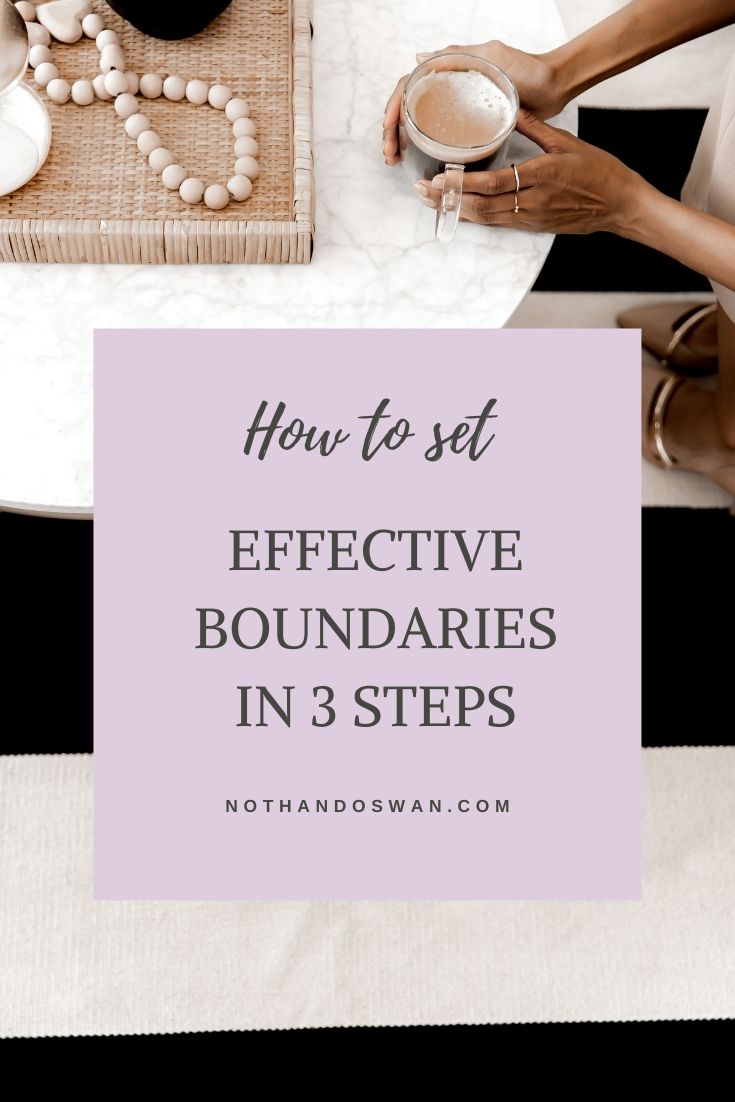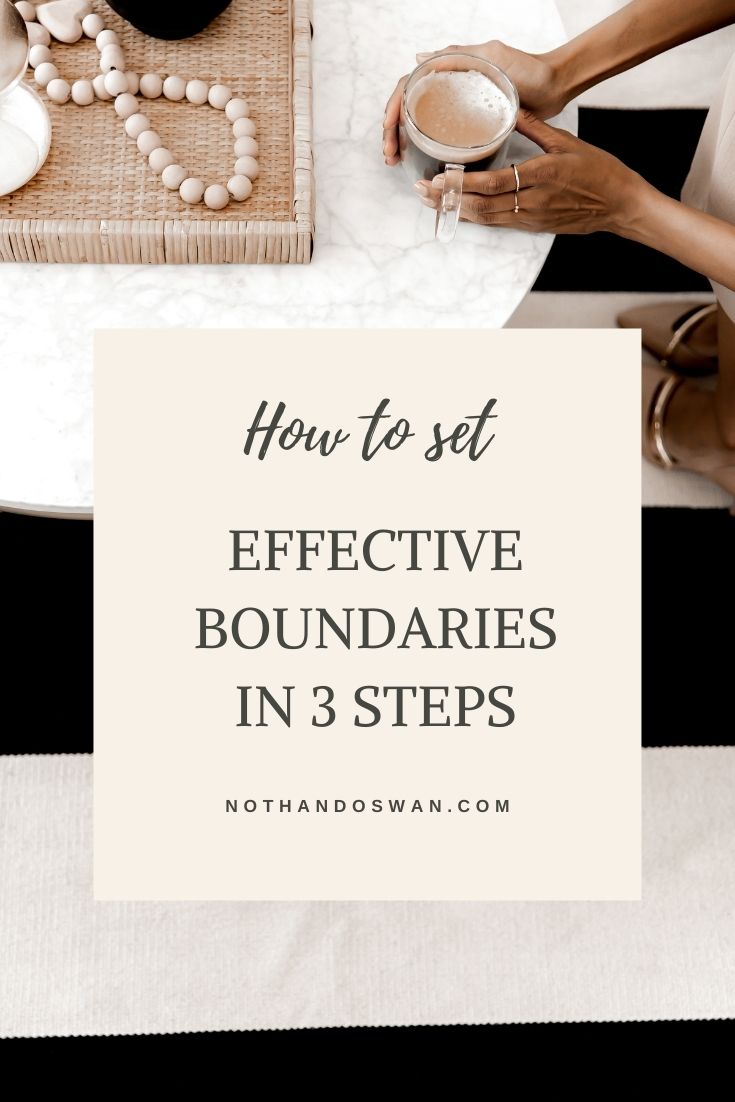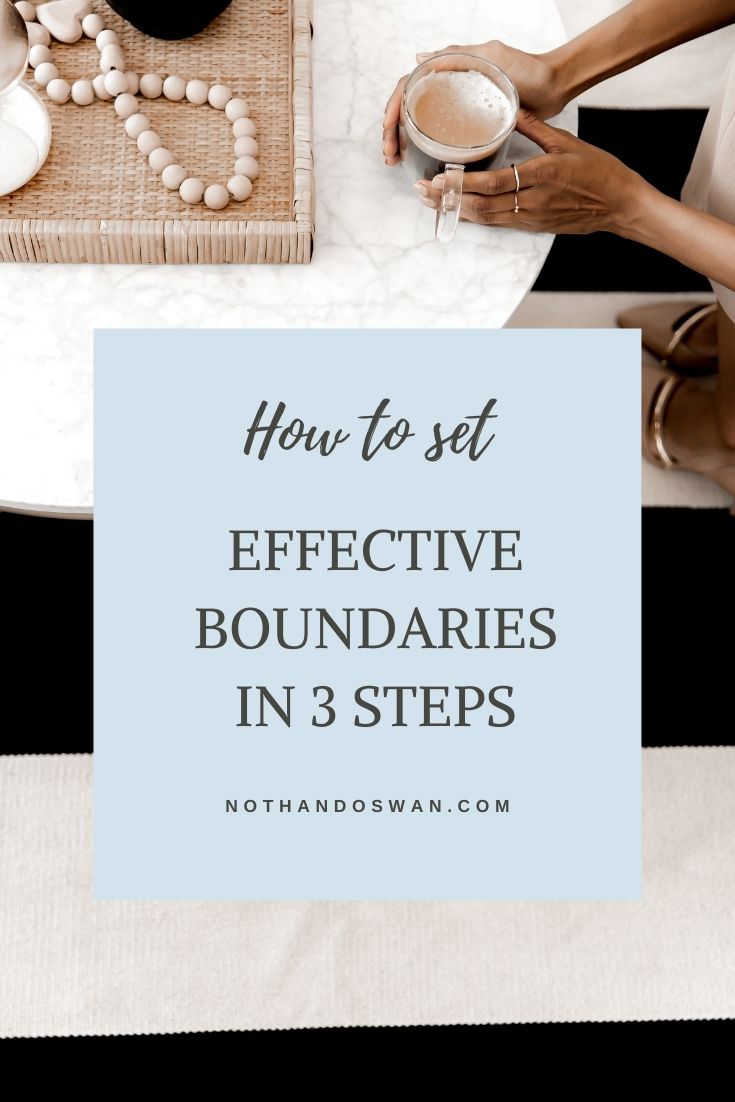
I was on the phone with my crush when he asked the question. (Not that question… but a pretty important one). It was our regular weekday night call, and I was chillin’ in sweatpants when he asked, “If we were together, where would we be?”
I froze. Because deep down inside, the fact that we were hours apart wasn’t okay with me. I knew we’d have to be in the same city – and more specifically, my city – if things were going to work out.
But telling him I wasn’t willing to move away from the city wasn’t gonna look good. I wanted so desperately to be the “perfect match” for him that I honestly considered saying, “we could be anywhere.”
But that wasn’t true. My boundary was this: I wouldn’t commit to an exclusive relationship with someone who wasn’t local.
In this blog post, I’m walking you through how to set boundaries. This is about mustering up the courage to act on what you already know to be true. In most cases, we know exactly what needs to change, but we need help to state it.
So here it is. How to set boundaries in three steps: identify the boundary, state it, and then reinforce it.
1. Identify your boundary
How do we even know what our boundaries could be? One way to identify a boundary is to recognize when we feel uncomfortable and question whether a boundary has been crossed. In other words, sometimes, our negative emotions help us realize that we’re missing a boundary.
And we miss them because we’re often asked to overlook how we’re feeling. We don’t have time to focus on our emotions because there’s work that needs to be done, children who need to be fed, or clients who need to be looked after. And so, as service providers, we’ve been taught to sidestep our emotions to get things done.
But this means we ignore clues about our boundaries. If you feel uneasy with every client visit, this could be a clue. If you feel flustered when you’re asked to take a call during clinic, this could be a clue.
Rather than pushing these feelings to the side to keep the peace (and productivity), I would encourage you to pay attention to these emotions and consider whether or not they could form a boundary for you.
In the workplace or in your personal life, what is one persistent uncomfortable emotion and when does it come up for you? How could this be a boundary?
P.S. You can also go deeper with this work by creating your own boundaries with our complete template guide here.
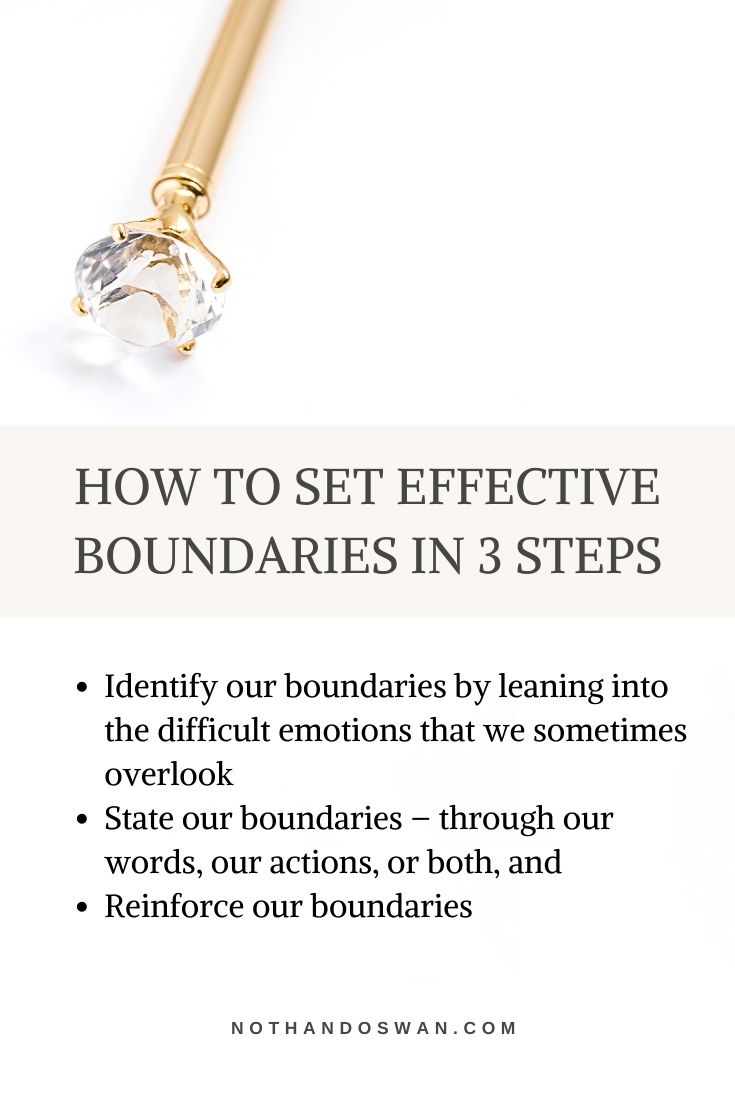
2. State the boundary
I knew that another long-distance relationship would feel achy and incomplete, and I acknowledged this by creating a new boundary. On that phone call when he asked where we’d be, I simply said “here.” I answered his question, and then I stated my boundary more clearly.
“I don’t feel good dating long distance, and so if I were with someone, we’d have to be in the same city,” breathe breathe breathe. How will he react?
This was a make-or-break moment.
“Okay. Do you wanna watch Selling Sunset?” he replied.
We’d gotten into a habit of chatting on the phone every night and then counting down 3-2-1 and hitting play at the same time on our separate computers. (Because, for the record, long-distance relationships can be meaningful and fun when both people are committed to each other and to the same future).
But that was it. He didn’t seem phased.
Stating your boundary can be short and sweet: “I’m only in the office from 9-5.”
“Our clinic will not serve anyone who swears at our staff.”
“No, I don’t do that.”
“No, I won’t be there in that environment.”
Or, if you feel particularly close to the person, you can add a feeling statement and a conversation opener.
“I feel so sad to miss out, but Sundays are family days so I won’t be there. Can we do something during the week?”
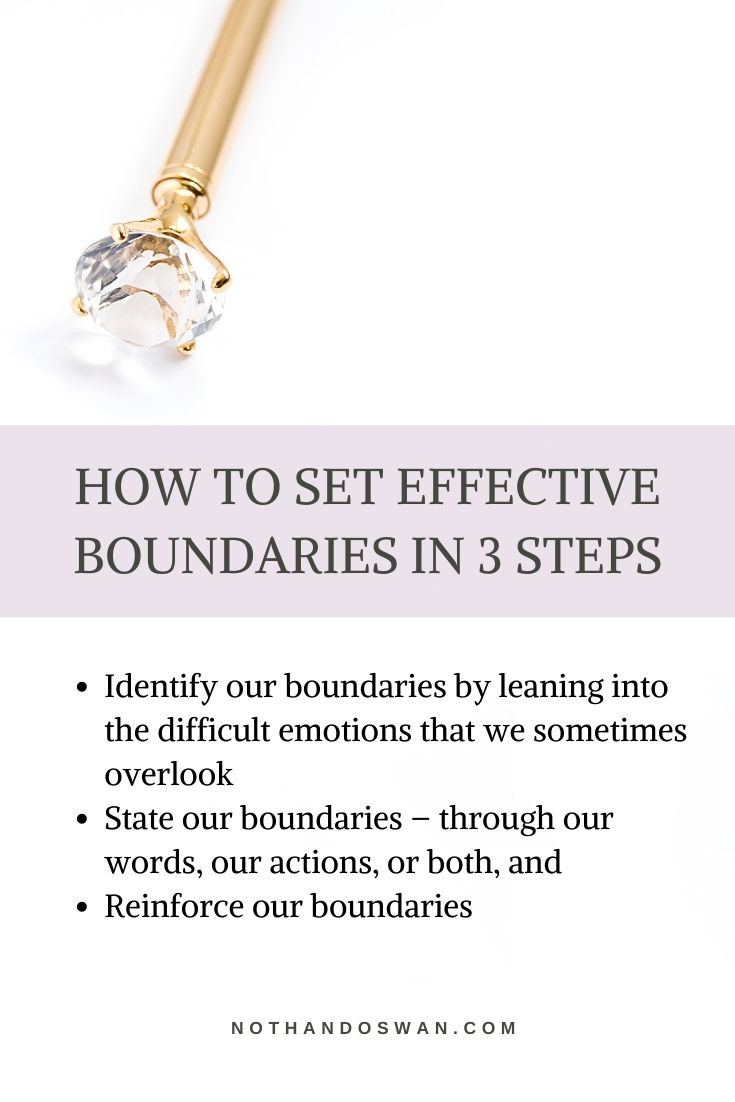
Verbal boundary formula
State the boundary
OR
I feel + state the boundary + conversation opener
(A conversation is completely optional. Boundaries don’t need further discussion.)
We can also state our boundaries through our actions
For example, if someone puts their arm around you and you feel uncomfortable with this, you can immediately take their arm and put it back in their lap. That’s clear.
So step 2 in boundary formation is simply stating your boundary: through your words, your actions, or both.
P.S. Don’t forget to download the Physician Guide to Boundaries here.
3. Reinforce your boundary
Here’s where I find most of my clients get stuck. When we state a boundary, there tends to be some form of pushback. Patients become upset. Friends don’t understand why you’re “making a big deal.” Family might ask why you don’t want to talk about it.
Just because someone is having a difficult time respecting your boundary doesn’t mean you have to change it. Let me say that again: the presence of pushback doesn’t mean your boundary is “too much.” It means the person who is hearing it is still processing it or – in the worst case scenario – not able/willing to process it. Which of the two it is (unintentionally pushing back versus maliciously testing your limits) is not your business.
Rather, the sooner we realize that pushback is common, the sooner we can start to anticipate it and plan a response. Again, so many of my clients wonder whether or not they’re being “too extreme” when they’ve set a boundary and receive negative pushback. What’s more likely is that people are not used to you advocating for yourself in this way. They’ll get used to it.
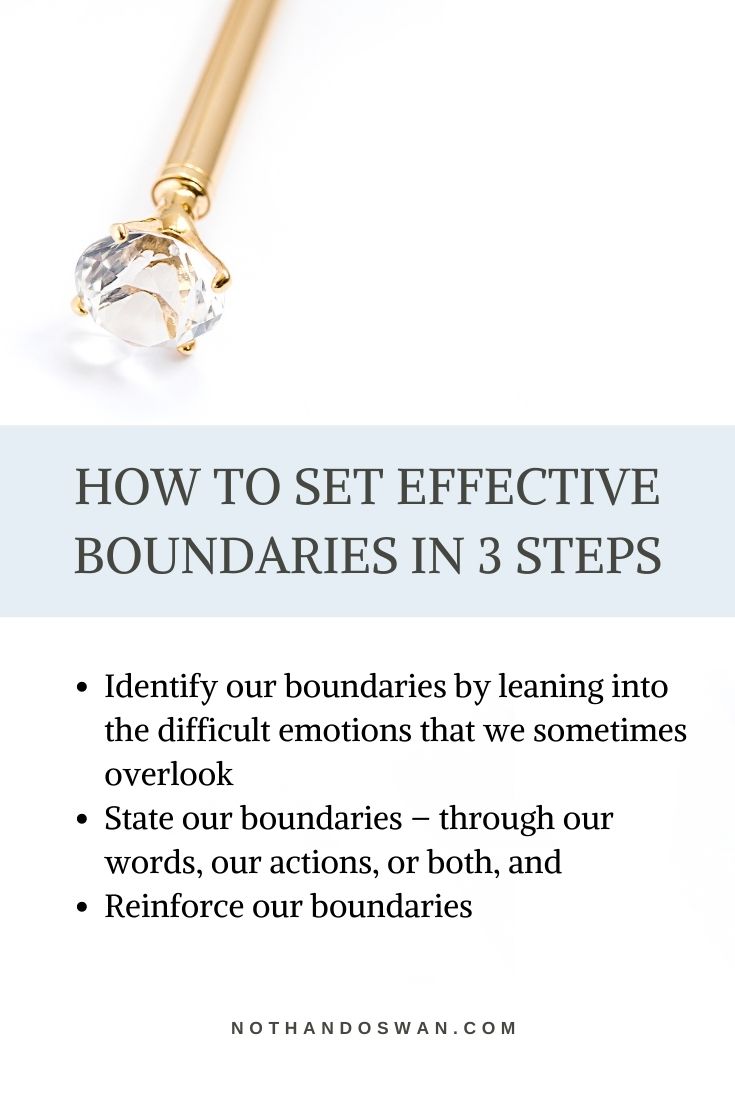
About my crush?
He moved a few months after we had that conversation. He heard my boundary and didn’t ask me to commit until he moved.
And all the worry I had about him being uninterested because I lived in the one city he never thought he’d move to became irrelevant. Where I was didn’t matter. How he responded was everything.
He moved and – based on another boundary that both of us had – he moved into his own place.
Had I needed to reinforce that boundary, I’d already given myself a timeframe. If we were still apart in a few months, we’d have to end things. (I’ll fill you in on the rest of the story in our next post on boundaries).
Summary
So really, there are only three steps to boundary formation:
- Identifying our boundaries by leaning into the difficult emotions that we sometimes overlook
- Stating our boundaries – through our words, our actions, or both, and
- Reinforcing our boundaries – sticking to them even if we get pushback
I hope this blog post has been helpful for you in forming and maintaining either a personal or professional boundary. If setting boundaries still feels difficult – or even if you’re just stuck on one of these steps – I would love to walk you through it on a coaching consult. If you show up for others for a living, you must be rock solid on your boundaries. It can be the difference between burning out and protecting your emotional capacity to show up and serve.
In this 60 minute consult, we’ll identify exactly what’s stopping you from stating your boundaries, and we’ll identify the skills you’ll need to hold true to them. You can absolutely have boundaries and still be helpful. And in fact, your work depends on it.
P.S. Download the Complete Guide to Boundaries for Physicians here.
Was this post helpful? If so, please Pin it or share it on your favourite online platform.
